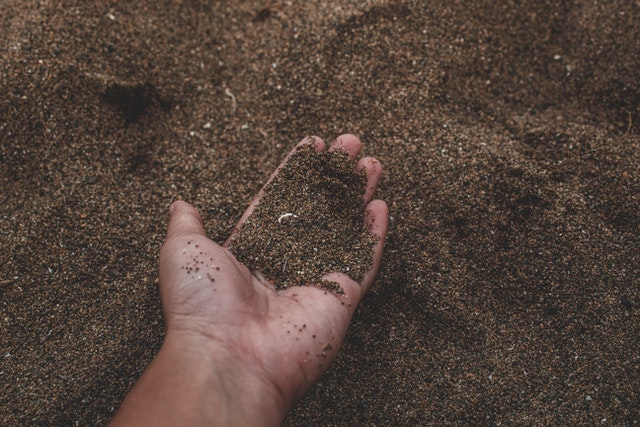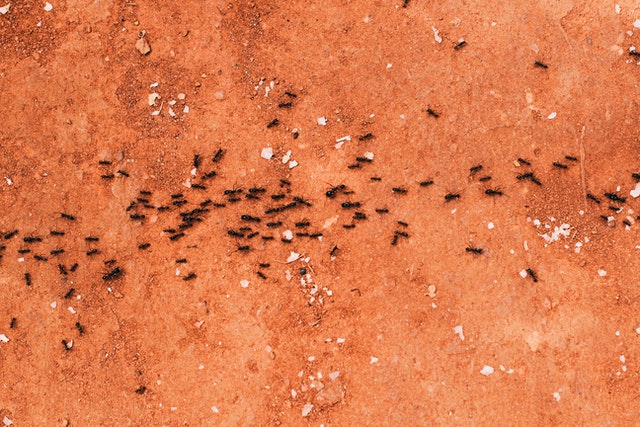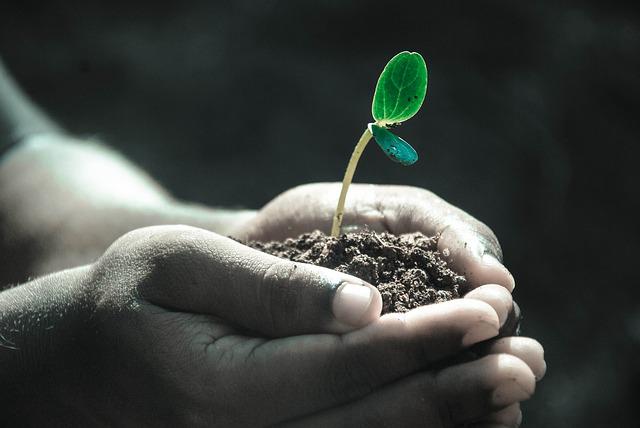If you’re getting your garden into shape and trying to make it look beautiful, you might be wondering, does soil go bad? Can you use old soil for new plants, or do you need to replace the soil?
Soil does go bad, which may surprise you. Some people think that they can keep soil indefinitely, using it year after year, or storing it in the bag that it was purchased in, without it causing any issues. This is not the case, and you need to use soil up and refresh it properly if your plants are going to thrive!
It’s important to understand when soil goes bad, so your garden can always look beautiful and your plants can grow healthy and strong.
Does Soil Go Bad?

Soil certainly can go bad, and if you’re keen to make your garden look beautiful, this is something that you should be aware of, especially if you are purchasing the soil. You should be aiming to use that soil up within the same season, rather than keeping it year after year.
That means you shouldn’t buy more soil than you need in a single season, whether it’s topsoil, compost, manure, or something else. There are quite a few problems that may occur with old soil, and if you buy the soil in bulk and then you keep it for months or even years, it’s unlikely to do your plants much good.
Problems that may occur include:
- Your plants failing to grow properly because the nutrients have been leached out of the soil
- The soil losing its structure, which means that it will become compacted more quickly, and may become waterlogged
- The soil developing issues with mold
- Insects infesting the soil
All of these things will cause issues for the plants that you want to grow, so it is best to avoid them. Below, we will look at them all in more detail, and share some quick fixes you may be able to try for a few of these issues.
1) Nutrient Loss
Nutrient loss is one of the biggest problems that can occur with old soil, and if your soil looks gray and dull, this is likely what has happened. Plants that are grown in this soil will not develop well, and may grow very slowly.
They will be more vulnerable to pests and diseases, because they won’t have the right nutrients to grow healthy foliage and roots.
Lack of nutrients can often be fixed by applying fertilizer to the soil, or mixing in fresh compost. This will restore the richness to the growing medium, and help the plants to grow well.
2) Structure Loss
Loss of structure is another major problem. Soil gradually compacts over time, and old soil that has lost its nutrients has also often lost its structure. Compacted soil will either result in water not penetrating to the roots, or water building up around the roots and causing waterlogging.
Additionally, plants that are grown in compacted soil may struggle because they will not get sufficient amounts of oxygen around their roots. This can make them more susceptible to root rot and other issues.
Again, this can sometimes be fixed by mixing the old soil with fresh soil or compost. Simply stir the two together, and the fresh soil should help to give structure to the old soil, making it usable again.
3) Mold Issues
Another answer to the question does soil go bad is that it sometimes develops mold. This is mentioned by RosySoil, which says that storing it in a warm, damp place with minimal airflow is likely to cause this problem. Closed bags of compost are more likely to develop mold, because some moisture can still get in, but very little air.
Using moldy soil is dangerous for both you and your plants. You don’t want to be breathing in mold spores, as these can have a serious effect on your health. You also don’t want to be introducing mold spores to your plant’s roots, as they may cause disease or rotting.
Not all molds are dangerous to all plants, but you should avoid using moldy soil, especially when potting seedlings. You can sterilize moldy soil by spreading it in the sun, and this will kill dangerous bacteria.
4) Insect Infestations

Another potential issue that you might see occurring is insects. According to TogetherTimeFamily, fungus gnats are a common problem in old soil. They particularly like moist soil, and although they are harmless to people, the larvae will devour the roots of plants. You will see tiny flies swarming around the soil.
Fungus gnats can also deplete the nutrients, making the soil poorer for the plants to grow in.
You can get rid of fungus gnats by drying the soil out for a few days, but make sure you do this before using it. They will otherwise attack anything that you plant in the soil, and may kill it quite quickly.
Why is Old Potting Soil Bad for Plants?
When you use old potting soil, several undesirable outcomes can occur, affecting the growth and health of your plants. Here are the key consequences to consider:
1. Impaired Plant Growth
An expired potting soil provides fewer nutrients to your plants compared to fresh potting soil. This nutrient deficiency can lead to stunted plant growth, weakened leaves, and a delay in flower and fruit development.
2. Nutrient Imbalances and PH Shifts
As potting soil ages, they may lack important nutrients or have excess unhealthy elements. This can lead to nutrient deficiencies or toxicities in plants respectively. Additionally, the pH of old soil may shift over time, potentially becoming too acidic or alkaline for optimal plant growth.
3. Decline in Soil Microbial Activity
Soil microorganisms play a vital role in maintaining soil health and nutrient cycling. Over time, old potting soil may experience a decline in microbial activity due to nutrient depletion, chemical imbalances, or lack of organic matter.
4. Decreased Soil Porosity
In the long run, old potting soil tends to lose its porosity, resulting in reduced aeration and water drainage. This can have detrimental effects on plant roots and overall soil health and richness.
Read more in this category: Perlite Propagation
Summary
So, the quick answer to “does soil go bad?” is yes, soil does go bad if it is left for too long. You should always check old soil before using it, and sterilize it or dry it out if necessary. It is generally a good idea to mix old soil with new, fresh soil before you plant in it.
Frequently Asked Questions
How do you know when soil is bad?
There are quite a few ways to tell that soil has gone bad, including those mentioned above. Look out for signs like soil dryness and poor moisture retention in particular. When soil goes bad, it tends to lose its structure and starts to crumble. Sometimes, wetting the soil will help to refresh it, but poor soil often looks cracked.
It may also take on a dull, gray-brown color, rather than being rich and dark. If it is pale, this indicates that most of the nutrients have gone out of it and it won’t feed your plants properly.
Finally, check for signs of mold or mildew in the soil. These indicate that it has gone off too.
How long does soil stay good for?
The time that soil stays good for will vary depending on how the soil is stored, but in general, you have about 6 months to use up opened potting soil before it starts to go off. If you have put potting soil into your garden and used it for plants, it should last for about 2 years before you need to start replacing it or topping it up with fresh soil.
If you don’t replace the soil from time to time, you will soon find that your plants do not grow as well, and begin to slow down and look sickly. This is because they aren’t getting the nutrients that they need to produce new growth.
Is it okay to use old potting soil?
You can use old potting soil as long as you mix it with soil that contains nutrients. However, if the old soil has already been used for growing and the plants were diseased, you should not reuse the soil, because it is likely to spread diseases to your new plants.
You should sterilize the old soil if you had any concerns about diseases or pest infestations. You can do this by heating the soil in the sun in plastic buckets, or using other methods.

Hey, I’m Lisa and I’ve been an avid gardener for over 30 years. I love writing, talking and living in the garden! Feel free to connect with me on my socials below

